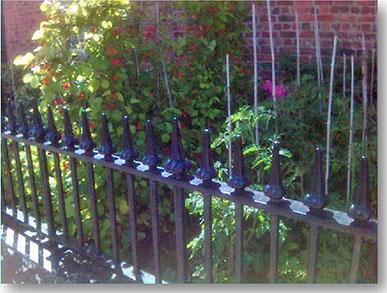

Home
About Us
Allotments
Seed Suppliers
Manure Problems
GLA Blog
Weather Blog
School Veg Patch
Useful Links
Weather Blog
Garden Video Blog
A Short History of Allotment
In Elizabethan times an area of land was given (or allotted) to cottage tenants for their own use. One reason for giving land to the peasants was that common land was being enclosed leaving nowhere for peasants to graze their animals or grow food crops.
Allotments as we know them, however date back to Victorian times when legislation was introduced which required that poor people should be allotted up to a quarter acre of land to garden. At this time this legislation was focused on rural areas. As the Industrial revolution took hold, and factories became the main source of employment, many people left the countryside to live and work in towns. People lived in poverty in squalid conditions and many resorted to drunkenness. Allotments then were provided to encourage people away from drink into a more ‘worthy’ way in which to spend whatever leisure time they had and to provide poor families with wholesome food.
In 1887, The Allotment Act required that local authorities had to provide allotments if there was demand.
In 1908, The Small Holdings and Allotments Act, consolidated all previous legislation and required local authorities to provide sufficient allotments according to demand. It also allows local authorities to compulsory purchase land to provide allotments.
During the First World War when there was a great shortage of fresh food the number of allotments grew. At this time there were about one and a half million allotments, many of which were only temporary. The land alongside railway tracks was also brought into use as allotment land and was often gardened by railway workers. Even now a train journey will reveal many allotment plots situated alongside the railway lines.
In 1919 The Land Settlement Facilities Act made Metropolitan borough councils allotment authorities for the first time. This was mainly to assist ex servicemen to acquire allotment plots and was probably the first time that allotments were recognised as not just being for labourers.
In 1922, The Allotments Act, was introduced to provide greater security to tenants of allotment plots. It required tenants to be compensated if plots were lost and specified that plots should be limited to a quarter of an acre and mostly used for growing fruit and vegetables.
The Allotments Act of 1925 established ‘statutory’ allotments that could not be sold or used for other purposes without government consent.
 Again during World War II when ports were blockaded and many men working on farms went to war there was a national “Dig for Victory” campaign, whereby any land on which it was possible to crop food was given over to crops. This included public parks and private gardens. Even those with the smallest of gardens were encouraged to turn them into mini allotments! The Piermaster's Wartime garden in Liverpool is a reconstruction of this.
Again during World War II when ports were blockaded and many men working on farms went to war there was a national “Dig for Victory” campaign, whereby any land on which it was possible to crop food was given over to crops. This included public parks and private gardens. Even those with the smallest of gardens were encouraged to turn them into mini allotments! The Piermaster's Wartime garden in Liverpool is a reconstruction of this.
At this time allotments became a very common part of the landscape in towns and cities.
Once the war was over, the popularity of allotment gardening plummeted, as due to the changes in farming methods, food became much cheaper and more readily available. Allotment gardening was thought of as the domain of old men in cloth caps escaping from under the feet of their wives to grow prize leeks and build rickety construction from anything that they could get their hands on.
The Allotments Act 1950 made several amendments to existing legislation. It extended the notice that local authorities must give to tenants regarding closure of sites to 12 months. It extended the right to compensation for the tenant but also made plot holders who neglected their plot to be liable to pay compensation to the local authority once they quit their plot. It also allowed for the introduction of some types of livestock such as hens and rabbits subject to local by-laws. Amendments were also made relating to rental charges.
This decline in interest continued until the 1970s when the television series “The Good Life” encouraged people to have a go at growing their own.
This renewed interest was, however, short lived and in the 1980s interest in allotment gardening was at an all time low with many allotments sites being sold off for building.
Recently allotment gardening has once more become a trendy leisure pursuit. More people want to eat food that has been grown without resorting to a barrage of chemicals and also see gardening as an alternative to visiting the gym as a way of exercising. New houses have very small gardens and the trend to build apartments means that many people do not have access to a garden at all. Allotment plots have become an alternative to a private garden and many would be more appropriately called leisure gardens.
Our Plot at Green Lane Allotments Blog | A Gardener's Weather Diary | School Vegetable Patch Website
© Our Plot on Green Lane Allotments - Please email me if you wish to use any of this site's content